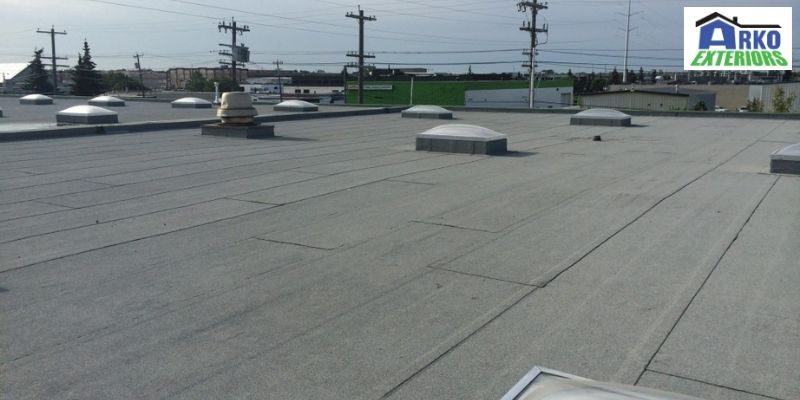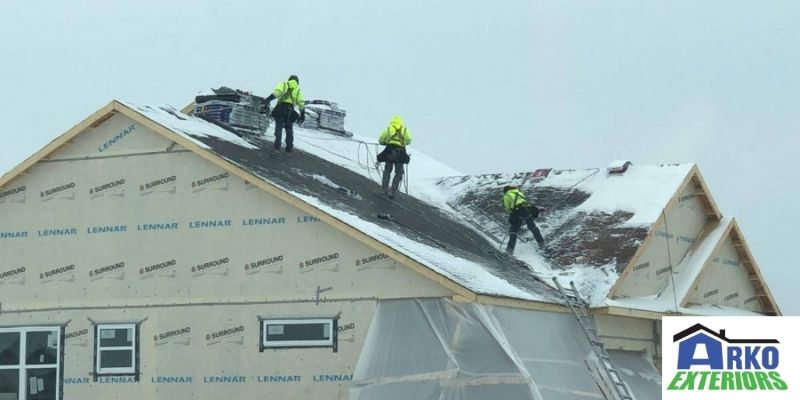Replacing a roof in the winter is not the same as replacing it during summer. To replace a roof when the temperature drops requires a lot of focus. Some homeowners would prefer doing it during the spring. However, certain situations may require that you replace your roof in the winter. Many possibilities can affect replacing a roof in the winter.
Factors That Affect Replacing A Roof In The Winter
Replacing a roof in the winter can be somewhat intimidating. However, it is something that must be done should a situation require it. The process to replace a roof in the winter can be made painless, safe and simple when the right precautions are followed.
Here are some things to keep in mind during the process of replacing a roof in the winter…
1. Roofing Contractor
Yes, it is possible to replace a roof in the winter. However, you must ensure that you hire a reliable roofing contractor for the project. The weather conditions can be extreme at times, and the work crews may need to clear off snow and ice. This will ensure their safety because of slippery surfaces.
Moreover, the low temperature would necessitate that the work crew put on special gear while working. This is because boots or heavy gloves will not allow them to easily bend their toes or grasp nails. These conditions make the work more difficult.
Therefore, you must hire a roofing contractor who will not cut corners. A reputable roofing contractor will work to ensure that your roof is replaced in a way that is safe for both you and the work crew during the winter months.
2. Experience Of The Roofing Crew
Hiring an experienced roofing contractor is important when replacing a roof in the winter. A knowledgeable roofing crew will know how to handle aspects like sealing in cold weather. Surely they will follow the manufacturer’s guidelines and recommendations for different temperatures.
Also, you should not expect to get charged less when you replace a roof in the winter. Reputable roofing contractors will always want to get the job done with high-quality materials and workmanship. This will in no way reduce the cost of the project.
You should also not be tempted to settle for a contractor who offers you their services for an extremely low price.
Additionally, ensure that you work with roofing contractors who will hand-seal every asphalt shingle when replacing a roof in the winter.
3. Sealants Used For Shingles

The majority of U.S. homeowners have an asphalt shingle roof. The shingles contain a strip of sealant that is also called glue or adhesive. It interacts well with the warm temperatures of summer.
Due to the combination of the summer’s pressure and heat, the sealant should seal on its own. Asphalt shingles are also nailed down. This helps to prevent curling. However, the roofing contractor must hand-seal every single shingle on a cold winter’s day. This is to ensure that the sealant bonds properly! What this means is that the natural heat from the sun cannot be relied upon to activate the seal, since temperatures will be low during winter. Hand-sealing can be time-consuming. Many experienced roofing contractors know this. The time that it takes ensures that every single shingle is well-sealed.
4. Slippery Surfaces
The winter season can cause roof surfaces to become slippery and slick. This is due to frost, ice or snow. These are conditions that a roofing contractor must deal with, and knowing this, the work crew must work carefully and methodically.
When replacing a roof in the winter, they must also put on roof-fall protection equipment and wear high-performance gear that includes winter-rated boots. De-icing and snow removal is another consideration when a roof is to be replaced in the winter. This requires extra caution, time and proper monitoring.
Additionally, you should not begin replacing a roof in the winter until the surface of the roof is free of frost and ice. This makes the conditions for replacing a roof in the winter safer.
5. Roofing Material
One key factor that affects the ability to replace a roof in the winter is the roofing material. At a temperature below 40 degrees Fahrenheit (4.44 degrees Celsius), roofing materials behave differently. Some types of roofs should not be replaced in such conditions.
In contrast, some materials can be used all year round, regardless of the weather conditions. Additionally, installing shingles is best when temperatures are above 40 degrees Fahrenheit (4.44 degrees Celsius).
A contractor must handle all types of roofing material with care during winter. This will make the roof replacement more efficient and help minimize the risk of problems down the line.
Types Of Materials That Can Be Used To Replace A Roof In The Winter
Not all roofing materials are suited for installation during the winter. Although materials such as metal roofs, flat roofs and asphalt shingles can still be installed in the winter, work must be done with care to avoid premature failure.
Here are some roof types that can be replaced in the winter…
Flat roof

It is possible to replace a flat roof in the winter. TPO and PVC are the two major flat roof systems that can be installed properly during this period. Both roof systems are installed mechanically. Adhesive is not used during the installation– instead, they are welded with hot air.
Asphalt shingles
Asphalt shingles can be replaced in the winter. However, precautions must be followed during the installation so that the shingles do not bend or crack.
Metal roof
Metal roofing can also be replaced in the winter without its quality being compromised. Additionally, metal roofs are not usually affected by the cold temperatures of winter. Their design allows for contraction and expansion.
Conclusion
It is possible to replace a roof in the winter. However, extreme care must be taken. You should consider a roofing contractor’s experience and ask whether or not they’ve done winter installations in the past. In Minnesota, even during the winter, Arko Exteriors can do roof replacements, so you’re welcome to call and schedule your appointment to talk about getting work done.

